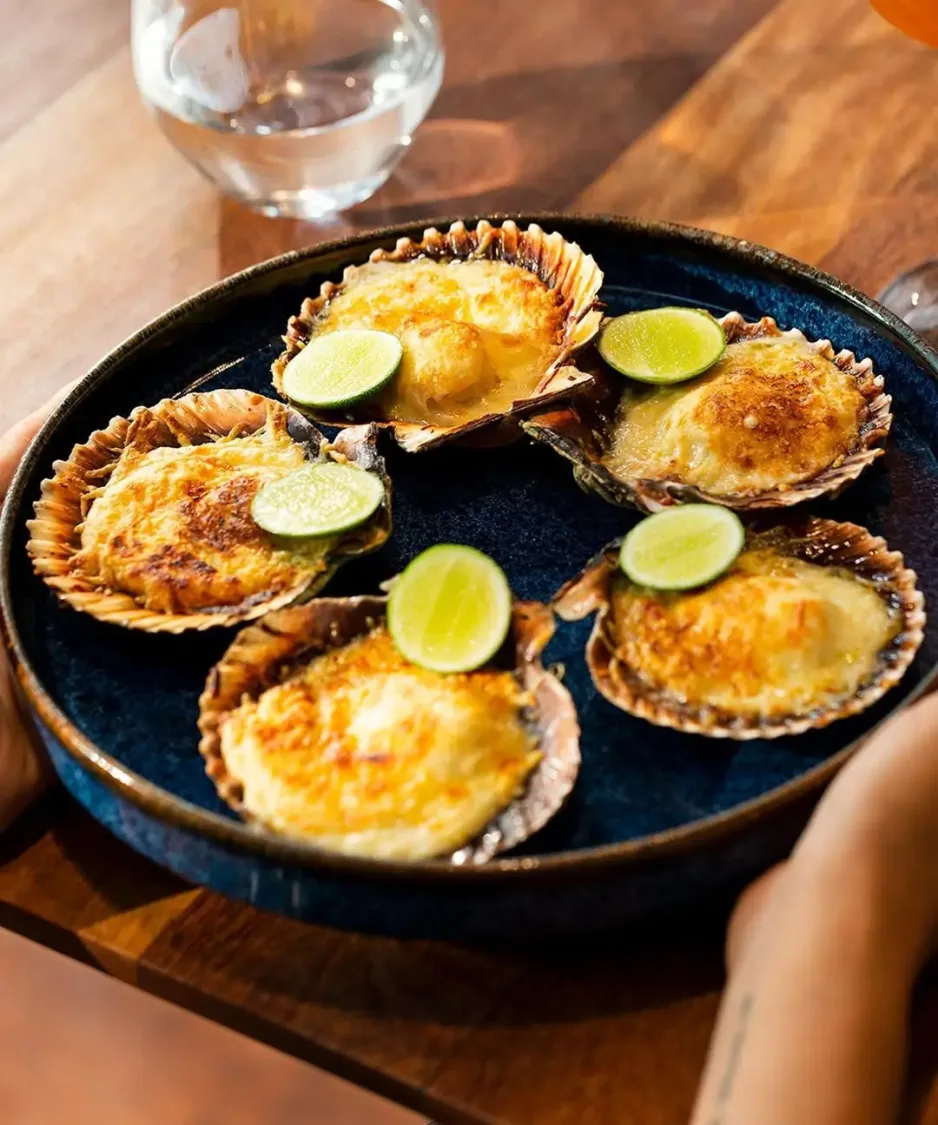
Conchitas a la Parmesana
Baked scallops with Parmesan cheese and butter.
Ingredients
- •Scallops
- •Parmesan cheese
- •Butter
- •Lime
- •Parsley
Instructions
Prepare Scallops
Clean scallops and place in shells. (5 mins)
Add Toppings
Top scallops with butter and Parmesan cheese. (5 mins)
Bake
Bake until cheese is melted and bubbly. (10 mins)
Conchitas a la Parmesana is a luxurious Peruvian seafood dish that features fresh scallops baked with Parmesan cheese and butter until golden and bubbly. This elegant appetizer perfectly represents Peru's rich coastal cuisine, combining the freshness of local seafood with European culinary influences.
The dish gained popularity in Lima's upscale restaurants during the 1950s and 1960s, though similar preparations of scallops can be traced back to the early days of Spanish colonization. The addition of Parmesan cheese reflects the Italian influence on Peruvian coastal cuisine.
The preparation is deceptively simple yet requires attention to detail. Fresh scallops are cleaned and placed in their half shells, then topped with a mixture of melted butter, minced garlic, and grated Parmesan cheese. A splash of white wine and a squeeze of lime juice add brightness. The scallops are then briefly baked until the cheese melts and develops a golden crust while keeping the scallops tender and juicy.
While the classic recipe is perfect as is, some chefs add their own twists. Modern variations might include a touch of aji amarillo paste for heat, breadcrumbs for extra crunch, or herbs like parsley or cilantro. Some versions incorporate local ingredients like rocoto pepper or even a dash of pisco.
In Peru, Conchitas a la Parmesana is typically served as an appetizer in seafood restaurants, particularly in coastal areas. It's often presented dramatically on a bed of rock salt or seaweed, garnished with lime wedges and fresh herbs. The dish is particularly popular during summer months and is a staple at holiday celebrations.
From a nutritional standpoint, scallops are an excellent source of lean protein, vitamin B12, and minerals like zinc and selenium. However, the addition of butter and cheese makes this dish relatively high in saturated fat and cholesterol. Those with shellfish allergies should avoid this dish entirely. For a lighter version, some restaurants offer the option to prepare it with olive oil instead of butter.
